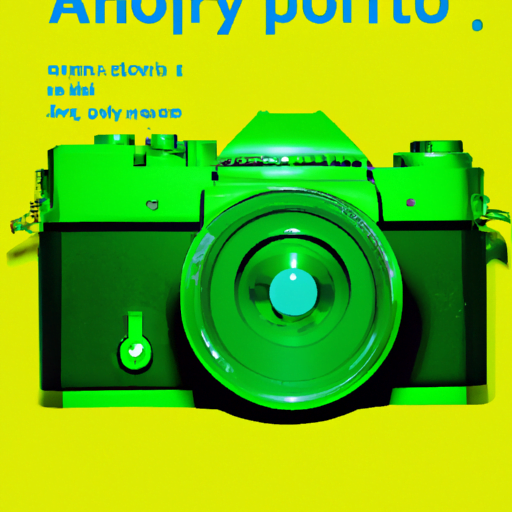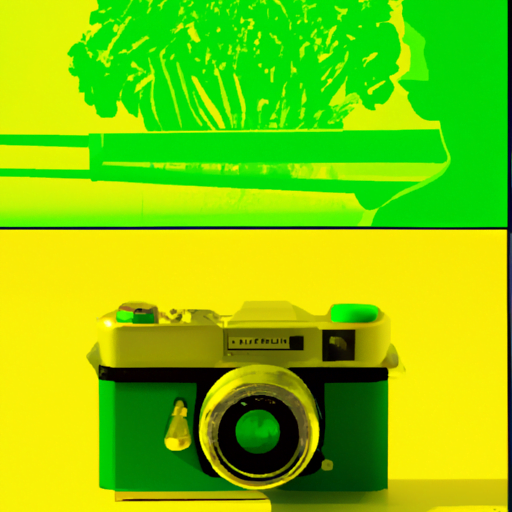
-
Table of Contents
Eco-Friendly Design: Creating Sustainable and Green Artworks

Art has always been a powerful medium for self-expression and creativity. However, in recent years, there has been a growing concern about the environmental impact of art production. Artists and designers are now seeking ways to create sustainable and eco-friendly artworks that not only inspire but also contribute to a greener future. In this article, we will explore the concept of eco-friendly design and how it can be applied to the creation of sustainable and green artworks.
Understanding Eco-Friendly Design
Eco-friendly design, also known as sustainable design or green design, is an approach that aims to minimize the negative impact on the environment throughout the entire design process. It involves considering the lifecycle of a product, from its creation to its disposal, and finding ways to reduce waste, conserve resources, and promote environmental responsibility.
When it comes to art and design, eco-friendly principles can be applied in various ways. From choosing sustainable materials to adopting environmentally friendly production techniques, artists and designers have the power to make a positive impact on the planet through their creative work.
Choosing Sustainable Materials
One of the key aspects of eco-friendly design is the use of sustainable materials. Traditional art supplies often contain harmful chemicals and non-renewable resources, which can have a detrimental effect on the environment. By opting for sustainable alternatives, artists can reduce their ecological footprint and create artworks that are both visually appealing and environmentally responsible.
For example, instead of using oil-based paints, artists can choose water-based or plant-based paints that are free from toxic chemicals. These paints not only produce vibrant colors but also have a lower impact on air and water quality. Similarly, artists can opt for recycled or upcycled materials, such as paper made from post-consumer waste or reclaimed wood, to create their artworks.
Case Study: The Recycled Sculptures of Tom Deininger
Tom Deininger, a renowned artist known for his innovative use of recycled materials, creates stunning sculptures from discarded objects. His artworks are not only visually captivating but also serve as a powerful reminder of the potential beauty that can be found in everyday waste.
Deininger collects various materials, such as plastic bottles, old toys, and scrap metal, and transforms them into intricate sculptures that depict a wide range of subjects. By repurposing these materials, Deininger not only reduces waste but also raises awareness about the importance of recycling and sustainability.
Adopting Environmentally Friendly Production Techniques
In addition to choosing sustainable materials, artists can also adopt environmentally friendly production techniques to minimize their impact on the environment. This involves considering the energy consumption, waste generation, and emissions associated with the creation of artworks.
One way to achieve this is by using energy-efficient equipment and tools. For example, artists can opt for LED lights instead of traditional incandescent bulbs, which consume less energy and have a longer lifespan. Additionally, artists can explore alternative printing methods, such as digital printing, which uses less ink and produces less waste compared to traditional printing techniques.
Furthermore, artists can incorporate recycling and waste reduction practices into their creative process. By reusing materials, minimizing waste, and properly disposing of hazardous substances, artists can significantly reduce their environmental impact.
Case Study: The Sustainable Studio of Olafur Eliasson
Olafur Eliasson, a Danish-Icelandic artist known for his large-scale installations, is committed to sustainability in his artistic practice. His studio in Berlin, Germany, is designed to be environmentally friendly and energy-efficient.
The studio incorporates various sustainable features, such as solar panels, rainwater harvesting systems, and energy-efficient lighting. Eliasson also encourages his team to adopt eco-friendly practices, such as recycling and composting, to minimize waste.
Through his sustainable studio, Eliasson not only creates artworks that inspire and provoke thought but also serves as a role model for artists and designers who aspire to incorporate eco-friendly principles into their creative process.
The Impact of Eco-Friendly Art
Eco-friendly art has the potential to create a significant impact on both the art world and the environment. By raising awareness about environmental issues and promoting sustainable practices, artists can inspire change and encourage others to adopt eco-friendly principles in their own lives.
Furthermore, eco-friendly art can also contribute to the development of a circular economy, where resources are reused and recycled, rather than discarded. By repurposing materials and creating artworks from waste, artists can demonstrate the value of sustainability and challenge the notion of disposable culture.
Conclusion
Eco-friendly design offers a unique opportunity for artists and designers to create sustainable and green artworks that not only captivate audiences but also contribute to a greener future. By choosing sustainable materials, adopting environmentally friendly production techniques, and raising awareness about environmental issues, artists can make a positive impact on the planet through their creative work.
Through case studies like Tom Deininger and Olafur Eliasson, we have seen how artists can incorporate eco-friendly principles into their artistic practice and inspire change. By embracing eco-friendly design, artists can not only create visually stunning artworks but also contribute to a more sustainable and environmentally conscious society.
